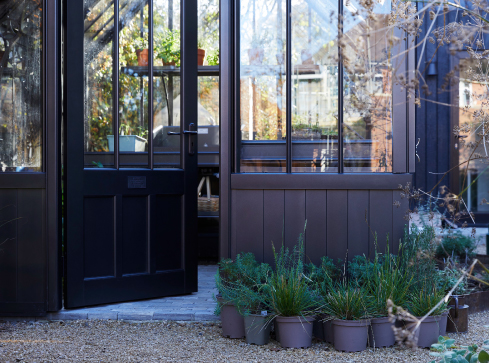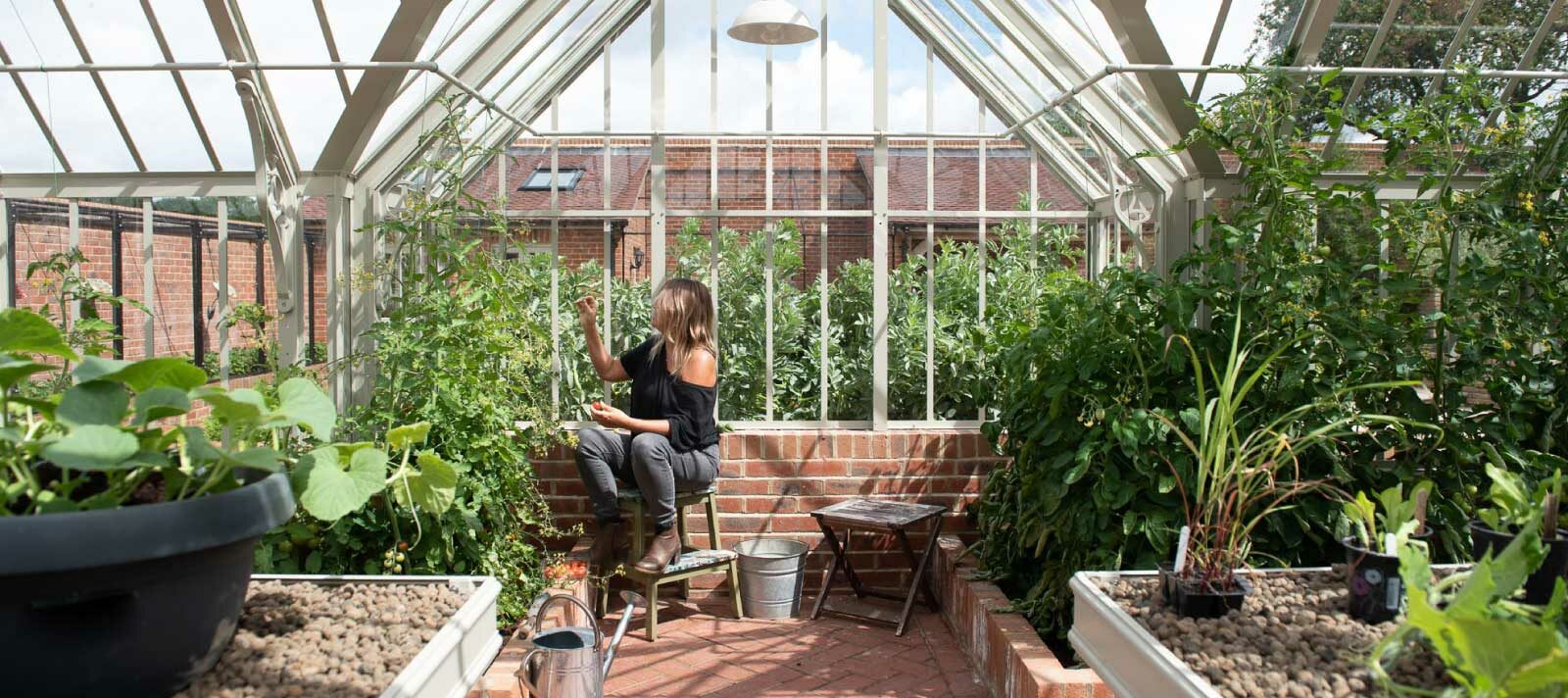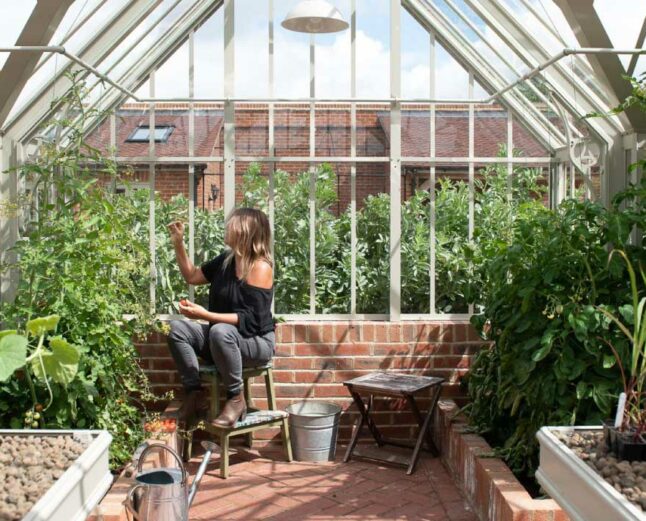Our friends over at Gardeners Path have pulled together their top 15 vegetables to grow in a greenhouse. From Squash to Spinnach there’s something to suit any gardener.
Growing vegetables in a greenhouse provides you with the perfect environment to cultivate fresh and delicious produce. With the right setup, greenhouses can be used to grow many different types of vegetables all year round. Here are 15 of the best vegetables that you could grow in your greenhouse for a steady supply of homegrown goodness.
What is a Greenhouse?
A greenhouse is a structure with walls and a roof made mainly of transparent material, such as glass, in which plants requiring regulated climatic conditions are grown.
These structures range in size from small sheds to industrial-sized buildings. Inside a greenhouse, temperature, humidity, and light can be controlled to create optimal growing conditions for plants.
This can include maintaining a warm temperature during cold weather, providing enough light for photosynthesis, and controlling humidity to prevent mold or mildew growth. Greenhouses can also be used to extend the growing season for certain plants, allowing them to be harvested earlier or later than they would be if grown outdoors.
This can include vegetables, fruits, flowers, and other plants. Greenhouses are commonly used for agricultural and horticultural purposes, as well as for research and education.
The greenhouse is an essential tool for plant growers, allowing them to cultivate plants in a controlled environment, regardless of the weather conditions.
Tomatoes
Tomatoes are a good choice for greenhouse growing, and there are a few key things to consider before you begin.
You should think about the climate and the amount of sunlight your area receives and also think about your tomato varieties and how well they tolerate greenhouse conditions.
In addition to good ventilation, tomatoes need a temperature that is above 50 degrees Fahrenheit. This will help them grow and produce fruit.
You can also protect your tomato plants from weather damage by planting them in a high tunnel. These will keep them dry from heavy rain.
While greenhouse tomatoes require less watering than field crops, they do need plenty of light. Your plants should be at least 24 inches apart to promote healthy growth.
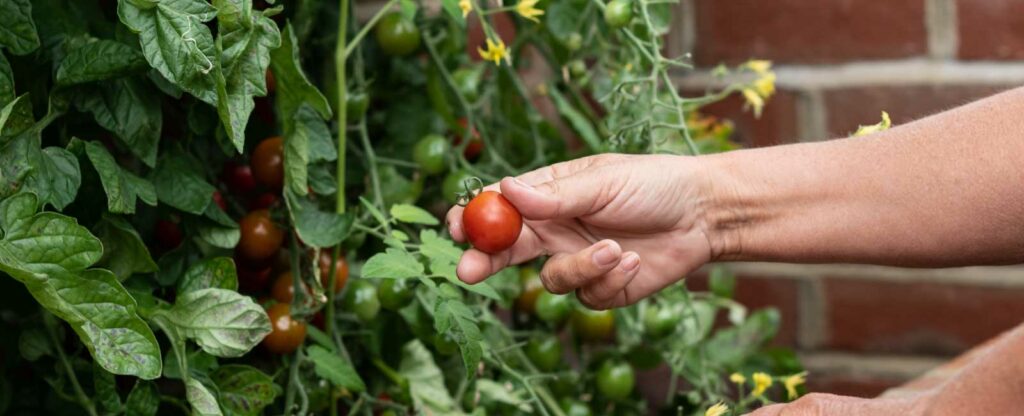
Peppers
They require a warm environment and are tender. This means they will need lots of water and a protective mulch. A trellis system will also help.
To start peppers you should choose the right variety. There are hot varieties, mild ones and even ones that are resistant to insect infestation. You can also try different shapes, colors and tastes.
Peppers should be planted in late April or early May. The plants should be set out 38-45 cm apart in rows 2 to 3 feet apart. Peppers are often cultivated in a soilless culture, but a small amount of manure can be added to the soil to enhance leafy growth.
Peppers grow well at 65 to 85% humidity. They will need ventilation to distribute heat and light to the roots. When the first true leaves appear, transplant the plants into permanent containers.
Aubergine
The plant requires a warm climate, moist soil and plenty of sunshine.
Aubergine prefer a well-drained, sandy or loamy base. They will also grow in clay, alkaline or acidic soils. In order to keep the plant healthy, you need to provide regular irrigation. It is best to use a water mist sprayer.
Growing Aubergines in a greenhouse allows you to avoid some pests and diseases. The best time to grow Aubergines in a greenhouse is during winter or spring. You can also start growing it during early summer.
Aubergines are heavy feeders and need a regular supply of nutrients to be healthy. Fertilising with compost or tea helps to maintain the soil’s nutrient content. It is best to use a balanced 10–10 liquid plant food.
Cucumbers
If you’re planning to grow cucumbers in a greenhouse, you’ll need to choose the right variety.
Some varieties are suited for growing in the greenhouse, while others are more suited for outdoor cultivation. The air temperature, humidity and the moisture content of the soil are all important factors.
Before you plant a cucumber seed in your greenhouse, you’ll need to make sure it has enough room. Plant the seeds about 1cm to 2cm deep.
You’ll also need to provide your plants with plenty of water. They require at least two to three liters of water per square foot. Water your plants thoroughly every morning.
Once your seedlings have a few leaves, you’ll need to train them up a support. You can do this by using a scaffold or a string.
As the young plants mature, you’ll need to prune them. Cut side shoots from the plant when they reach 60cm. This will encourage more growth and produce larger crops.
Squash
You can grow your own squash in a greenhouse, but you’ll need a good amount of space. The plant grows well in a warm climate, so it’s best to choose a location that has a temperature of at least 65 degrees Fahrenheit.
A greenhouse is a great place to grow squash because it provides a constant source of moisture, as well as good air circulation. In order to make the most of your investment, you need to pick the right plants.
There are several varieties of squash, including the yellow squash, which is a good candidate for container gardening. Some types of squash, such as butternut, don’t produce a vine, but they are still quite productive.
Broccoli
When you’re planning to grow broccoli in a greenhouse, you’ll want to plan ahead. The best time to plant is in late spring and early summer. This way, you can ensure that your crop will mature before the first hard freeze.
You’ll also need to keep your plants well watered. If you don’t give them enough water, they can rot. If you provide them with water on a regular basis, your broccoli will be able to thrive.
Aside from being a tasty vegetable, broccoli is rich in vitamins. It is high in riboflavin, thiamine, vitamin C, and carotenoids.
It’s important to choose a location that provides full sun and a moist, rich soil. Broccoli is a very hungry plant and you’ll need to ensure that it gets plenty of nutrients.
Your broccoli is going to need some special care when it comes to harvesting. The stalk will have to be cut at an angle, which encourages the production of side shoots. Also, it’s important to make sure that the heads are tight and packed.
Lettuce
Lettuce can be a great vegetable to grow in a greenhouse. It likes cooler temperatures, usually between 55-70°F, making it an ideal crop for spring and fall growing seasons. Lettuce plants also love humidity so the enclosed environment of a greenhouse helps keep moisture levels high.
The soil should be moist but not soggy and they prefer a slightly alkaline soil. Lettuce plants need plenty of sunlight but not necessarily direct, so the filtered light in a greenhouse makes it an ideal location for growing lettuce.
When planting, choose loose leaf varieties as opposed to head or romaine lettuces because these are easier to harvest, store, and use. Plant them in rows about 6-8 inches apart with the seeds just barely covered with soil.
Be sure to thin out the seedlings as they grow so that there is plenty of space between each plant for them to grow and thrive. Water your lettuce plants frequently but not too much. Once a week should be enough, but check the soil for moisture before watering to make sure it is not too wet.
Lettuce does not take long to grow and will be ready to harvest in just a few weeks. Cut off the outer leaves first, leaving the inner leaves intact so that the plant continues to produce more leaves.
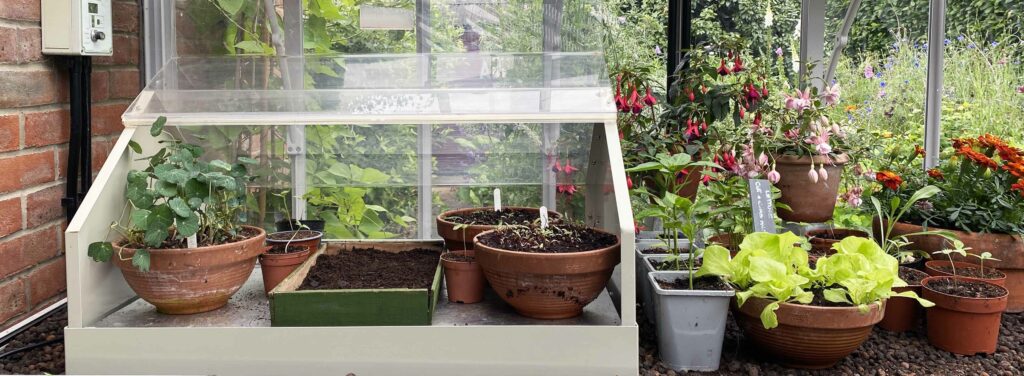
Spinach
Spinach is an edible leafy vegetable that is easily grown in most climates. It can be grown from seeds or transplants. The best time to plant spinach is early spring when soil is workable.
Spinach grows best in a greenhouse environment as it is able to get the most sunlight and warmth. Spinach prefers temperatures of around 50-75°F, so if you can keep your greenhouse at this temperature range, then spinach is a great option for growing in the greenhouse.
The soil should be well drained and kept slightly moist by watering regularly. Spinach should be planted in rows, and thinned to 6-8 inches apart. Once the plants are established, fertilise them every few weeks with a balanced fertiliser for best results.
Harvesting spinach is easy, as you can simply cut off the individual leaves or snip stems from the base of the plant when they are ready. If you prefer to harvest the whole plant, be sure to leave several inches of stem so your spinach will grow back and continue producing leaves for a few weeks.
Spinach is best eaten fresh or cooked within a few days of harvest, as it can lose its flavor quickly if left in storage for too long.
Carrots
When growing carrots in a greenhouse, it’s best to use deep, well-drained soils. You can also grow them in pots.
Carrots are a good source of Vitamin A, and also an excellent source of fiber. These nutrients are beneficial for your body’s health.
The best time to plant carrots is in the early spring. If your climate is cooler, you can also consider planting them in the winter months. But it’s best to avoid planting them during the summer.
Carrots are drought-resistant once they begin to germinate. Nevertheless, it’s important to water the seedlings regularly. They need about an inch of water a week.
Growing carrots in a greenhouse can extend the growing season. It may be difficult to maintain temperatures at the optimal level.
Radishes
Radishes have a variety of benefits that make them ideal for growing in the greenhouse. They are fast growing, taking just about 30 days from germination to reach maturity, and easy to care for.
Radishes prefer cooler temperatures and moist soil so they are well suited for a greenhouse environment where the temperature can be controlled. The cool temperatures also help to prevent bolting, as long days and warm temperatures can cause radishes to bolt.
They are also relatively disease resistant and easy to harvest; the entire root can be eaten raw or cooked. Radishes have a high nutritional value, providing excellent amounts of vitamin C, vitamin K1, folate, potassium and copper.
They can also be stored for long periods of time – up to three months if kept cool and dry – making them ideal for preservation in a greenhouse.
Bean Sprouts
Bean sprouts are a great vegetable to grow in the greenhouse, as they require minimal space and effort for growing. They can be grown both from dry beans or soybeans. Bean sprouts are known for their high nutrient content, including protein, iron and vitamins A and C.
When growing bean sprouts in the greenhouse, it is important to make sure that the environment is kept moist and warm. The beans should be watered daily, but not overly saturated (withstanding waterlogging).
The optimal temperature for bean sprouts is 65-75 degrees Fahrenheit. If the temperature drops below 55 degrees, you may need to invest in a heating system for optimal growth.
Bean sprouts can be harvested in as little as 4-7 days, depending on the variety of bean. It is important to harvest them when they are young, before the leaves and stem become too tough. When harvesting, simply cut off the sprouts from the stem and remove any discolored or wilted sprouts.
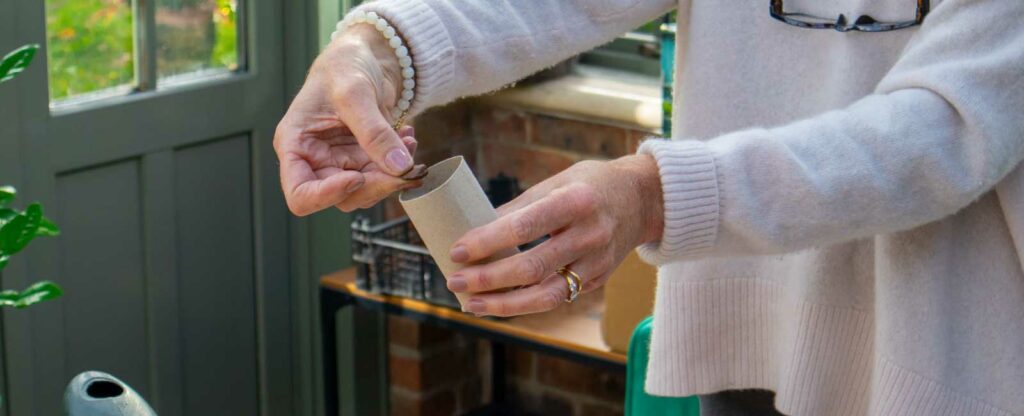
Beets
Beets are a versatile plant, which can be grown in a variety of places. They can be planted in the ground, in containers, and even in a greenhouse.
To grow beets, they need a rich soil, loose and moist. A soil test will help determine the pH of the soil.
If you are growing beets in a greenhouse, the temperature should be around 60 degrees Fahrenheit. You should water your beets gently to prevent scab, a disease that can cause damage to your beets.
When growing beets, it is important to rotate your plants to keep diseases from spreading. Rotation can also be achieved by covering your beets with row cover to protect them from pests and insects.
If you are planting beets in a container, be sure to choose one that is at least 10 inches deep. It should also have holes at the bottom to drain excess moisture.
Garlic
Garlic is a great plant to grow in a greenhouse because it is easy to care for, and it can be planted in the winter.
It can be grown in potting soil, or you can just plant the cloves directly into the ground when the soil becomes workable. Once you’ve harvested the cloves, you can save the heads for planting in the spring.
Another method for growing garlic in a greenhouse is to plant the cloves in a tray. The cloves should be about 2 inches deep and 4 to 6 inches apart. You should also add a layer of mulch on top.
Garlic isn’t a hardy plant, but it can survive in a colder climate. You may want to consider growing it in a high tunnel. They are similar to greenhouses, but they don’t have an artificial heating system.
Planting garlic is a fun project to do in the winter. Depending on the climate, you can plant it in October, November or early December.

Onions
Onions are ideal vegetables to grow in a greenhouse for a number of reasons.
They require little attention and care and can be grown year-round in the warmer climate of a greenhouse. Onions require minimal space, making them easy to fit into small greenhouses or those with limited growing areas. They are relatively pest resistant and do not require any additional protection from pests or diseases.
Onions can be grown in either pots or directly into the soil of the greenhouse, depending on your preference. If choosing to grow onions in pots, it is important to use a potting mix specifically designed for growing vegetables. This will provide adequate drainage and nutrition for the onions to thrive.
When planting onions, pay attention to the amount of sun or shade they will be receiving. Onions prefer full sunlight, though they can tolerate some shade. They should be planted at least 12 inches apart and watered regularly, being careful not to over water them.
Celery
Celery is an extremely frost-sensitive plant. It will bolt if it is exposed to low temperatures. You may also need a row cover or cloche to keep it from freezing.
Before you begin, make sure the area you’re growing celery in is well-lit. Try to keep the soil moist and enriched with compost.
To prevent blight, celery needs to be spaced at least 12 inches apart. You should mulch the area to keep the soil cool. The roots of celery are fragile, so the soil should be loose and rich in organic matter.
Celery can be harvested in large quantities or in small amounts. A good rule of thumb is to start harvesting as soon as the stalks are 8 inches tall.
If you plan on growing celery in a greenhouse, you will need to provide adequate light and water. Make sure the plants receive a minimum of 5-7 hours of sunlight each day.
To help ensure your seeds get off to a good start, you can thin your seedlings before planting. Celery seeds can be sown directly into the ground, but you will need to harden them off for a week to 10 days first.


